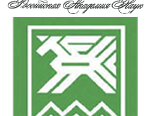Н.П. Милянчук, Н.В. Ильмаст, О.П. Стерлигова, Е.Н. Распутина, И.В. Филатов.
Рыбное население Сямозера в районе форелевого хозяйства
Keywords: lake ecosystems; fish fauna; commercial fish farming; eutrophication; Republic of Karelia
The species composition and biological parameters of fish from Lake Syamozero areas (Republic of Karelia) near rainbow trout farming cages were studied. Evidence was found that the main pollutants in waters harboring commercial rainbow trout farming facilities are nutrients (nitrogen and phosphorus) and excreted fish metabolites, which promote eutrophication. Our study showed that operations of the trout farm have induced structural
modifications in the lake’s fish population. The most abundant fish species in the current aquaculture area used to be the vendace Coregonus albula, whereas now there prevail the roach Rutilus rutilus, perch Perca fluviatilis and ruffe Gymnocephalus cernuus. Significant variations were observed in the biomass of fish aggregations across the lake during the study period. Fish density indices near cage lines were 1.5‑fold higher than in open water areas. One of the main presumable reasons for local fish species to aggregate near cages is to feed on trout fodders. We also noted that the rates of lengthand weight increment in roach, perch and ruffe around the cages were significantly higher than in remote parts of the lake, which is also due to additional dietary supply of trout fodder residues washed out of the cages.
Indexed at RSCI






